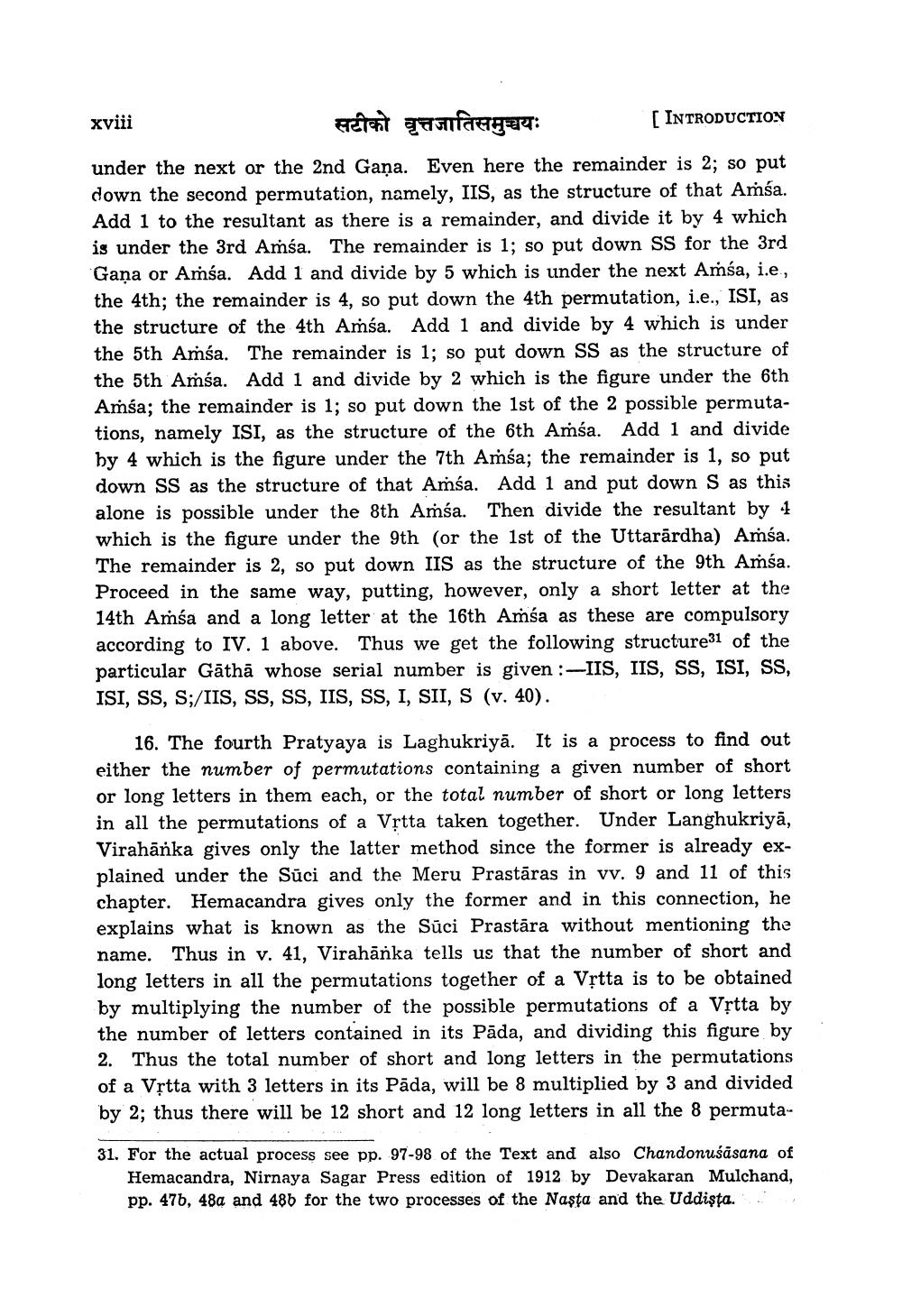________________
xviii
सटीको वृत्तजातिसमुच्चयः
[INTRODUCTION
under the next or the 2nd Gana. Even here the remainder is 2; so put down the second permutation, namely, IIS, as the structure of that Amsa. Add 1 to the resultant as there is a remainder, and divide it by 4 which is under the 3rd Amśa. The remainder is 1; so put down SS for the 3rd Gana or Amśa. Add 1 and divide by 5 which is under the next Amśa, i.e, the 4th; the remainder is 4, so put down the 4th permutation, i.e., ISI, as the structure of the 4th Amśa. Add 1 and divide by 4 which is under the 5th Amśa. The remainder is 1; so put down SS as the structure of the 5th Amsa. Add 1 and divide by 2 which is the figure under the 6th Amsa; the remainder is 1; so put down the 1st of the 2 possible permutations, namely ISI, as the structure of the 6th Amśa. Add 1 and divide by 4 which is the figure under the 7th Amśa; the remainder is 1, so put down SS as the structure of that Amsa. Add 1 and put down S as this alone is possible under the 8th Amśa. Then divide the resultant by 4 which is the figure under the 9th (or the 1st of the Uttarardha) Amsa. The remainder is 2, so put down IIS as the structure of the 9th Amsa. Proceed in the same way, putting, however, only a short letter at the 14th Amśa and a long letter at the 16th Amśa as these are compulsory according to IV. 1 above. Thus we get the following structure31 of the particular Gāthā whose serial number is given:-IIS, IIS, SS, ISI, SS, ISI, SS, S;/IIS, SS, SS, IIS, SS, I, SII, S (v. 40).
16. The fourth Pratyaya is Laghukriyā. It is a process to find out either the number of permutations containing a given number of short or long letters in them each, or the total number of short or long letters in all the permutations of a Vṛtta taken together. Under Langhukriyā, Virahanka gives only the latter method since the former is already explained under the Suci and the Meru Prastāras in vv. 9 and 11 of this chapter. Hemacandra gives only the former and in this connection, he explains what is known as the Suci Prastāra without mentioning the name. Thus in v. 41, Virahanka tells us that the number of short and long letters in all the permutations together of a Vṛtta is to be obtained by multiplying the number of the possible permutations of a Vṛtta by the number of letters contained in its Pāda, and dividing this figure by 2. Thus the total number of short and long letters in the permutations of a Vṛtta with 3 letters in its Pāda, will be 8 multiplied by 3 and divided by 2; thus there will be 12 short and 12 long letters in all the 8 permuta
31. For the actual process see pp. 97-98 of the Text and also Chandonuśäsana of Hemacandra, Nirnaya Sagar Press edition of 1912 by Devakaran Mulchand, pp. 47b, 48a and 48b for the two processes of the Naşta and the Uddista.




